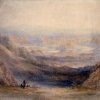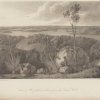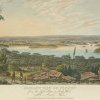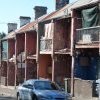1880s
1880
The Association for the Protection of Aborigines is established, which, through its chairman George Thornton, considers it ‘wise and beneficial that reserves of suitable land should be set apart for the use of Aborigines, for purposes of forming homes, cultivation and production of grain, vegetables, fruit etc, for their own consumption, this would prove a powerful means of domesticating, civilising and making them comfortable’. (see stories)
Groups of Koori people from NSW are settling in the Sydney region in greater numbers. Many come from the Illawarra region, the North Coast and the Hunter River. The Illawarra people often settle at La Perouse, the northerners near the government boat sheds at Circular Quay near today’s Museum of Contemporary Art. They are drawn to the city because they are suffering increasing poverty and dislocation on their own lands, many are looking for work. The historian Heather Goodall writes that their demands for boats and lands draws as much attention as their drinking.
1881
Thornton states ‘One of my first anxieties on assuming the duty of Protector was to endeavour to get all the Aborigines away from Sydney and suburbs and back into their own districts, and I took such steps as would attain that object'. The historian Maria Nugent writes: ‘The measures included closing down the metropolitan Aboriginal camps and prohibiting the provision of rations to city dwelling Aborigines.’ However Thornton continues to tolerate the camp at La Perouse. Koori and other homeless migrants turn their attention to other areas of the outer harbour like Balmain, for places to settle.
1882
Clearing of houses begins in the inner city suburbs, to construct the Eveleigh Railway Workshops, bounded by north Newtown, Erskineville, Redfern, Alexandria and Chippendale. By the early 1990s more than 300 people are employed at this site including Koori people. Others, however, are dispossessed of their town camps.
1883
The Government-controlled Aborigines Protection Board is established. Chairperson George Thornton continues to want to clear Koori people from Circular Quay, Balls Head, Rose Bay, Lavender Bay and anywhere else they are living in the inner harbour. He proposes that reserves should be established to enable Koori people to build homesteads and grow crops. It's first address is the Chief Secretary’s Building, 121 Macquarie Street.














.thumbnail.jpg)
.thumbnail.JPG)


